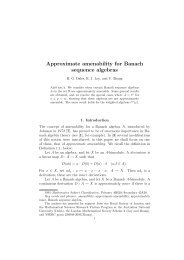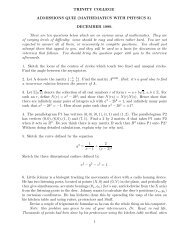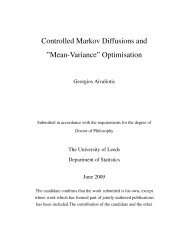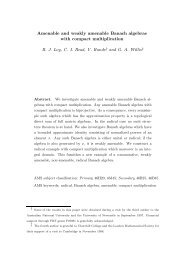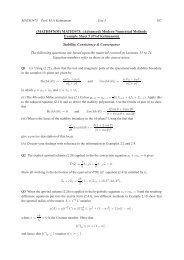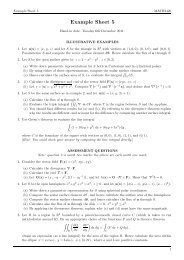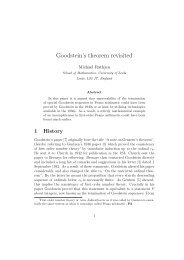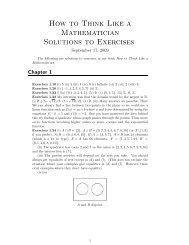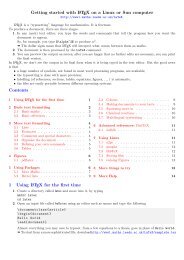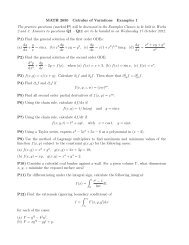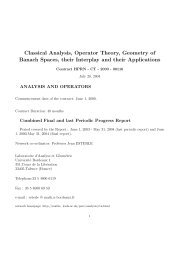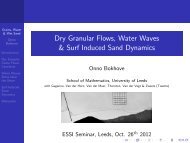A study of time integration schemes for the numerical modelling of ...
A study of time integration schemes for the numerical modelling of ...
A study of time integration schemes for the numerical modelling of ...
You also want an ePaper? Increase the reach of your titles
YUMPU automatically turns print PDFs into web optimized ePapers that Google loves.
A. MALIDI, S. DUFOUR AND D. N’DRI(a) t = 0.0 (b) t = 3.6 (c) t = 4.8 (d) t = 6.0Figure 15. Buoyancy-driven rising <strong>of</strong> a single bubble.and <strong>the</strong> Weber number is given byWe = a2 g 2=7:6where <strong>the</strong> reference velocity u 0 is <strong>the</strong> experimentally observed [27] steady-state rise velocity<strong>of</strong> an air bubble, which is u 0 =21:5cm=s. The Strouhal number St is again set to 1. The o<strong>the</strong>rquantities were previously described.Figure 15 illustrates <strong>the</strong> de<strong>for</strong>mation <strong>of</strong> <strong>the</strong> rising bubble at various <strong>time</strong> steps. The simulationwas per<strong>for</strong>med <strong>for</strong> <strong>the</strong> complete bubble. Our methodology per<strong>for</strong>ms well in maintaining<strong>the</strong> symmetry <strong>of</strong> <strong>the</strong> bubble, and its vertical path. Since this simulation is per<strong>for</strong>med usinga Cartesian frame <strong>of</strong> reference, <strong>the</strong> computed shapes <strong>of</strong> <strong>the</strong> bubble dier slightly from <strong>the</strong>ones illustrated in Reference [26]. The computed rising speed <strong>of</strong> <strong>the</strong> bubble is underestimatedwhen compared to <strong>the</strong> non-dimensional rising speed which should be equal to 1, this beingcaused again by our 2-D approximation <strong>of</strong> an axisymmetric phenomena. Finally, usingour methodology, we measure a <strong>numerical</strong> mass loss <strong>of</strong> <strong>the</strong> order <strong>of</strong> 8% over 80 <strong>time</strong> steps(t =0;:::;6:5).We will now <strong>study</strong> <strong>the</strong> rise and interaction <strong>of</strong> two bubbles due to buoyancy. It is a commonpractice in <strong>the</strong> literature to describe bubbles dynamics problems using <strong>the</strong> Eotvos number,also known as <strong>the</strong> Bond numberEo = 2gL 2 0and <strong>the</strong> Archimedes number, also known as <strong>the</strong> Galileo numberN = 2 2 gL3 0 2 2Copyright ? 2005 John Wiley & Sons, Ltd.Int. J. Numer. Meth. Fluids (in press)



